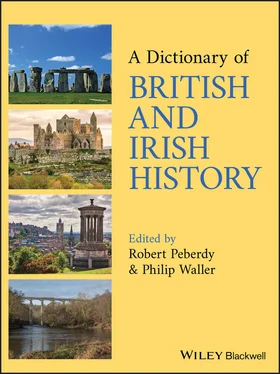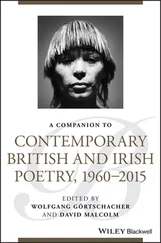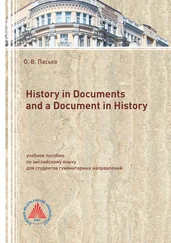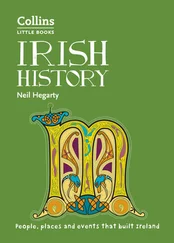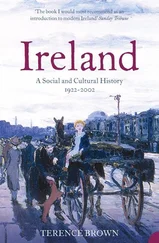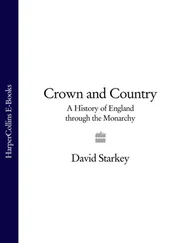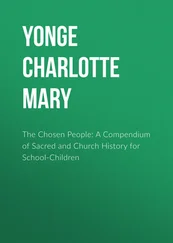(b. 26 Feb. 1629 at Dalkeith, SE Scotland; d. 30 June 1685 at Edinburgh, SE Scotland, aged 56). Unlike his father the 8th earl of ARGYLL, Archibald Campbell was a Royalist and fought for King CHARLES II against Oliver CROMWELL at DUNBAR (1650), WORCESTER (1651), and during the GLENCAIRN RISING (1653–4). He was imprisoned in 1657, and again after the RESTORATION (1661–3, for criticising Charles's government). On his release he received his father's earldom and lands.
In 1681 Argyll, a strong Protestant, was arrested by the Catholic duke of Albany (the future JAMES VII/II), then KING'S COMMISSIONER in Scotland, and convicted of treason for refusing to acknowledge royal supremacy. He escaped (Dec. 1681) and fled abroad, only to be captured and executed after the ARGYLL RISING. See also CIVIL WARS, SCOTTISH PARTICIPATION; MACKENZIE, GEORGE; ARGYLL, EARLS AND DUKES OF.
ARGYLL, EARLS AND DUKES OFThe principal titled family of the Campbell CLAN (originally from STRATHCLYDE; in Argyll, W Scotland, from the 13th century). Colin Campbell (fl. 1431–93) was created earl by King JAMES II (1457 or 1458); his successors (dukes from 1701) were constantly prominent in Scottish and British political life. See also ARGYLL, 8TH EARL OF; ARGYLL, 9TH EARL OF; ARGYLL, 2ND DUKE OF; ISLAY, EARL OF. ARGYLL RISINGA rebellion in Scotland in 1685 against King JAMES VII/II led by Archibald Campbell, (9th) EARL OF ARGYLL, INTENDED TO COINCIDE WITH MONMOUTH'S REBELLION IN ENGLAND. ARGYLL RETURNED FROM THE DUTCH REPUBLIC, TO WHICH HE HAD ESCAPED IN 1682 AFTER BEING CONDEMNED TO DEATH FOR TREASON (FOLLOWING ARREST BY JAMES, THEN DUKE OF ALBANY). Argyll landed in the WESTERN ISLES (mid May), moved to the mainland, but was captured (18 June) and executed (30 June). ARISTOCRACYsee NOBILITY ARISTOCRACY OF LABOURTerm coined in 1871 by Russian anarchist theorist Mikhail Bakunin for élite workers, such as printers and ENGINEERING craftsmen. They were considered to exhibit the hallmarks of an aristocracy: higher living standards, collective pride and hereditary recruitment. Skilled workers dominated British TRADE UNIONISM and other working‐class movements (e.g., CHARTISM) from the 1820s until the rise of general unionism in the 1880s. ARKWRIGHT, RICHARD(b. 23 Dec. 1732 at Preston, Lancashire, England; d. 3 Aug. 1792 at Cromford, Derbyshire, England, aged 59). Originally a wig maker, Arkwright in 1767 designed a machine for spinning threads using rollers, the ‘water frame’. It enabled fine, strong thread to be produced, suitable for warps, and could be driven by external power. By 1772 he established a FACTORY at Cromford (on R. Derwent), which spun cotton and silk yarns using water power. Arkwright became England’s largest cotton spinner, with numerous factories and several thousand employees. He was knighted in 1786. See also COTTON INDUSTRY, ENGLAND. ARLINGTON, EARL OF
(b. autumn 1618 in England; d. 28 July 1685 at Westminster, Middlesex, England, aged 66). A Royalist in the CIVIL WARS, Henry Bennet lived in overseas exile 1647–61, variously serving Prince Charles (CHARLES II from 1649) and James, duke of York. As a SECRETARY OF STATE to Charles from 1662 he was a rival of the earl of CLARENDON. He was created Lord Arlington in 1665.
After Clarendon’s fall (1667), Arlington became an influential minister (one of the CABAL group). In foreign affairs, he created a ‘triple alliance’ with the Dutch and Sweden (1668), but negotiated with France after Charles changed policy. He signed the secret treaty of DOVER (1670). In April 1672 he was created an earl, after the start of war against the Dutch.
In 1674 Arlington was impeached for promoting popery, advising war, and self‐aggrandizement. Though successful in defence, he sold his secretaryship (Sept.) and lost influence to the earl of DANBY. He declared himself Catholic on his deathbed. See also ANGLO‐DUTCH WARS; IMPEACHMENT.
ARMADAsee SPANISH ARMADA ARMAGH
A city in Northern Ireland, centre of Co. Armagh; from Irish, Árd Macha, meaning ‘Macha’s height’.
Associated with PATRICK (5th century), Armagh was an ecclesiastical centre (monastic and lay settlement) which developed proto‐urban characteristics. From the 7th century its bishops, as successors of Patrick and supported by the UÍ NÉILL, claimed pre‐eminence over Ireland’s churches. Armagh’s monastery had strong scholarly traditions; its scriptorium produced the Book of ARMAGH (807). Its community was dominated by hereditary abbots. Canons replaced the community in the early 12th century.
Armagh became the centre of a territorial diocese and province in 1111, and was granted primatial status in 1152 (at the synod of Kells), though this was subsequently challenged by archbishops of Dublin ( see PRIMACY DISPUTE, DUBLIN AND ARMAGH). From 1545 (except 1553–8) there were Church of IRELAND and Catholic primates, and a Catholic cathedral was built 1840–73. Armagh’s city status, removed in 1840, was formally restored in 1994. See also MONASTICISM, MEDIEVAL IRELAND; CAPITALS.
Est. popn: 1300, 1000; 1600, 800; 1800, 4000; 1900, 7000; 2000, 14,000.
ARMAGH, BOOK OFA small‐format manuscript book (in Trinity College, Dublin, Ireland). It originated as a copy of the New Testament made in 807 for Abbot Torbach of ARMAGH (N Ireland), but further texts were added, notably the Confession of PATRICK and other Patrick‐related documents. It was later kept as a relic by the coarb (‘heir') of St Patrick and then by the hereditary steward of Armagh (until late 17th century). ARMENIAN MASSACRES (1896)The mass murder of Armenian revolutionaries by Turks in Constantinople (Istanbul), capital of the OTTOMAN EMPIRE, Aug. 1896. The massacres provoked protests in Great Britain led by journalist W.T. STEAD and former prime minister W.E. GLADSTONE. Diplomatic efforts by the serving prime minister, Lord SALISBURY, to reform the Ottoman Empire proved ineffectual. Henceforth British public opinion balked at supporting Turkey over the EASTERN QUESTION. ARMINIANISM
A theological movement in the 17th century deriving from the rejection by the Dutch Protestant theologian Jacobus Arminius (1560–1609) of Calvinist doctrine on predestination, and his acceptance of man’s free will ( see CALVINISM). Calvinists regarded Arminianism as a betrayal of Protestantism.
In England, during the reigns of JAMES VI/I (1603–25) and CHARLES I (1625–49), anti‐Puritans (in the Church of ENGLAND), particularly Archbishop William LAUD and his followers, were often (inaccurately) described by opponents as Arminians. See also MONTAGU, RICHARD; GRAND REMONSTRANCE.
ARMSTRONG, WILLIAM(b. 26 Nov. 1810 at Newcastle upon Tyne, Northumberland, England; d. 27 Dec. 1900 at Cragside, Northumberland, aged 90). A lawyer who was fascinated by machines, Armstrong in 1847 formed a company which manufactured hydraulic devices (lifts, cranes) at Elswick near Newcastle. In the 1850s, he was involved in designing guns and mines (knighted 1859), and in 1859 started his own ordnance factory, also at Elswick. From 1875 Armstrong lived mainly on his country estate at Cragside. His firm merged with a warship builder in 1882, becoming Sir William Armstrong, Mitchell & Co., Ltd; it became one of the world’s largest engineering companies. Armstrong was created Lord Armstrong in 1887. See also ENGINEERING, GREAT BRITAIN. ARMY, ENGLISH AND BRITISH
England’s first regular army was Parliament’s NEW MODEL ARMY (1645). Disbanded by King CHARLES II in 1661–2, it was replaced with a small force of ‘guards and garrisons’ based on ‘regiments’ (9000 troops by 1685). Forces were also established elsewhere (e.g., Ireland, TANGIER). Subsequent expansion (to 35,000 troops, including Catholic officers) contributed to the overthrow of JAMES VII/II (1688). People feared a STANDING ARMY, and saw defence as depending primarily on the NAVY. The requirement for substantial parliamentary funding from the 1690s facilitated civilian control.
Читать дальше
